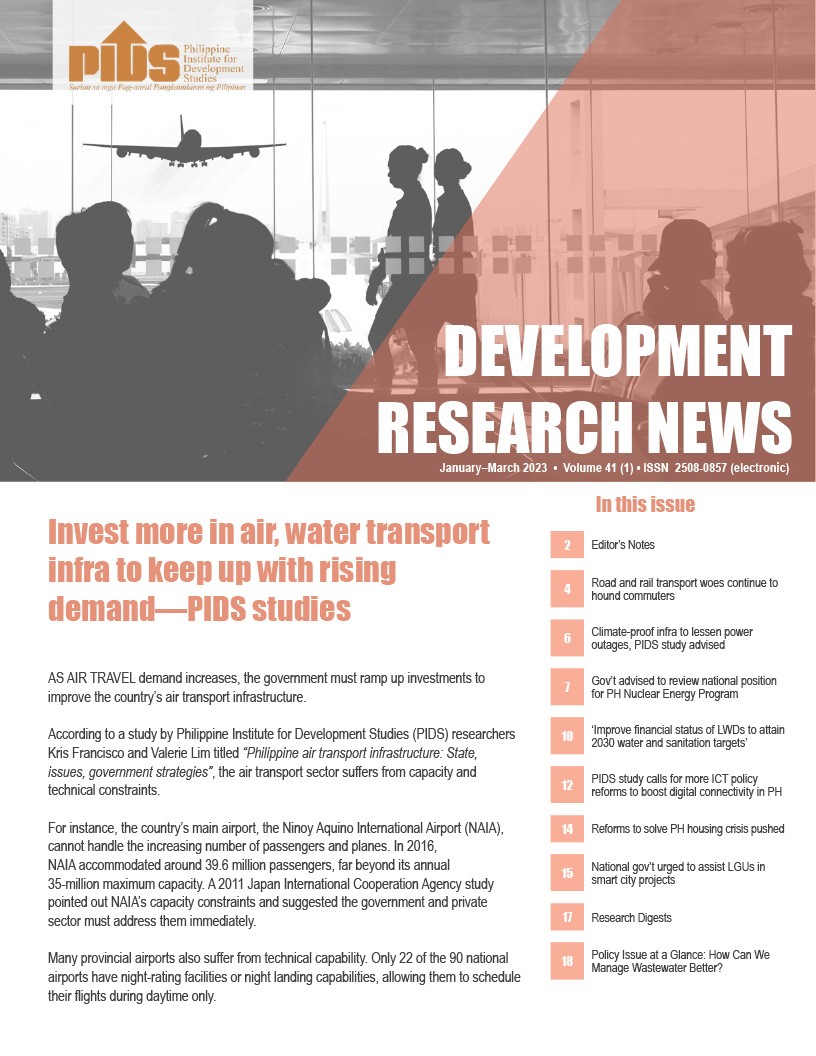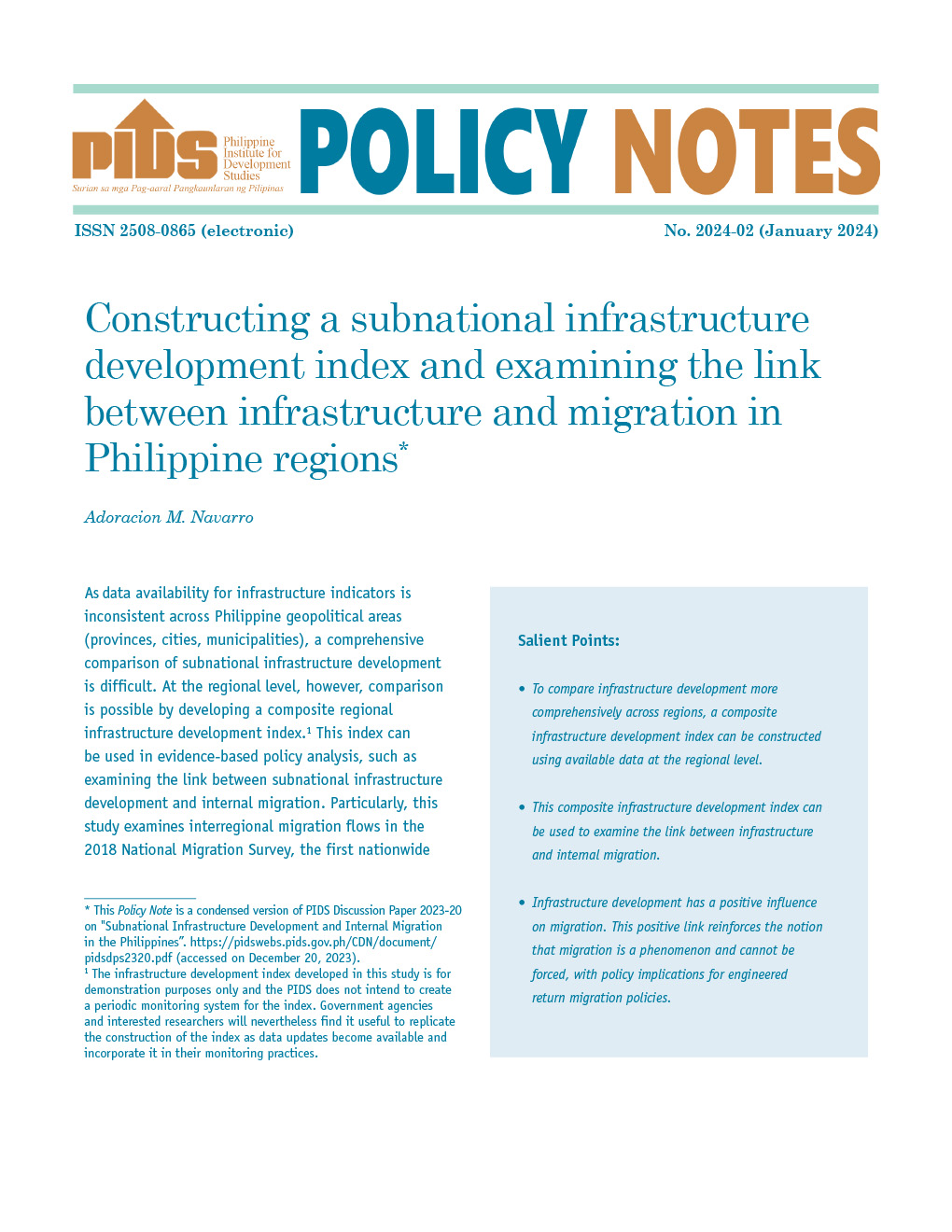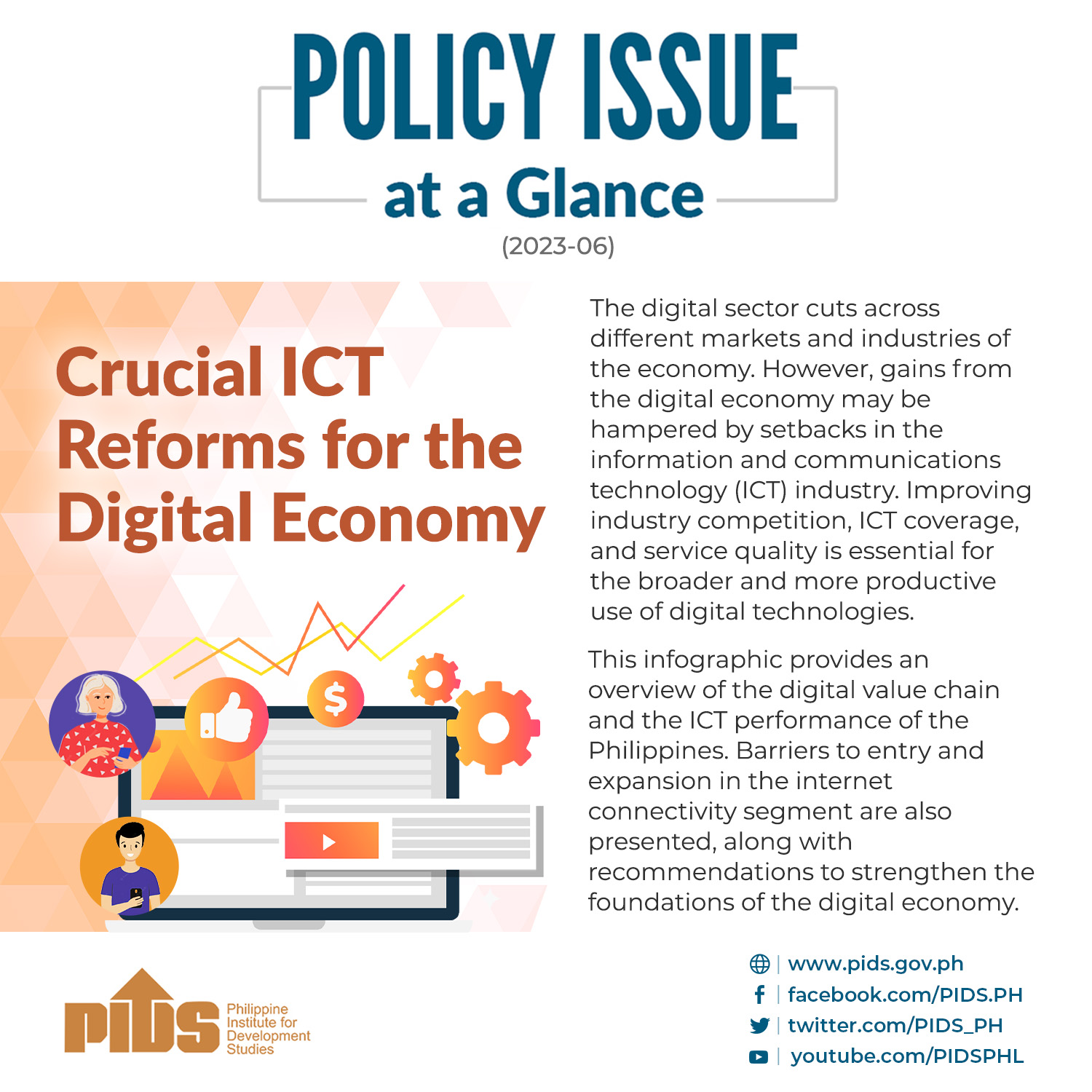State think tank Philippine Institute for Development Studies said the quality of the Philippine telecommunication regulatory environment is significantly below international standards. In a discussion paper authored by Ma. Kristina Ortiz, Ramonette Serafica and Jose Carlos Alexis Bairan, PIDS said the Philippines had an overall rating of 52.50, which is midway of the ideal level in the scoring system set by the International Telecommunications Union. This makes the Philippines the second lowest among seven Southeast Asian countries assessed. The other six are Singapore, Malaysia, Thailand, Vietnam, Myanmar and Cambodia. The countries were reviewed in four clusters, namely regulatory authority, mandate, regime and competition framework. Of the four clusters, the Philippines scored lowest in the regulatory regime with only 7 out of 30 points. Regulatory regime reviews specific regulatory interventions and covers the kind of targeted regulation needed to promote a healthy competitive environment. For one, the Philippines does not issue global or unified licenses, which is considered optimal and reflects increased market liberalization in the global market. The absence of number portability, or the ability of mobile phone users to retain their mobile number when changing from one mobile network carrier to another, is also considered a weakness of Philippine telcos. “Policies that will reduce customer switching and search costs, as well as the promotion of the efficient use of facilities, embedding adequate monitoring and data reporting, and clearly specifying obligations or rules of conduct of various market players are seen as possible interventions to improve telcos in the country,” the authors said in a report. Another flaw of Philippine telcos is regulatory mandate, which evaluates the various functions of the regulator based on its thrusts. The Philippines ranked second lowest with 10.5 next to Myanmar with 7.5 out of a possible 22 points, due to a number of factors such as the lack of regulatory mandate over interconnection rates and universal access or service.












